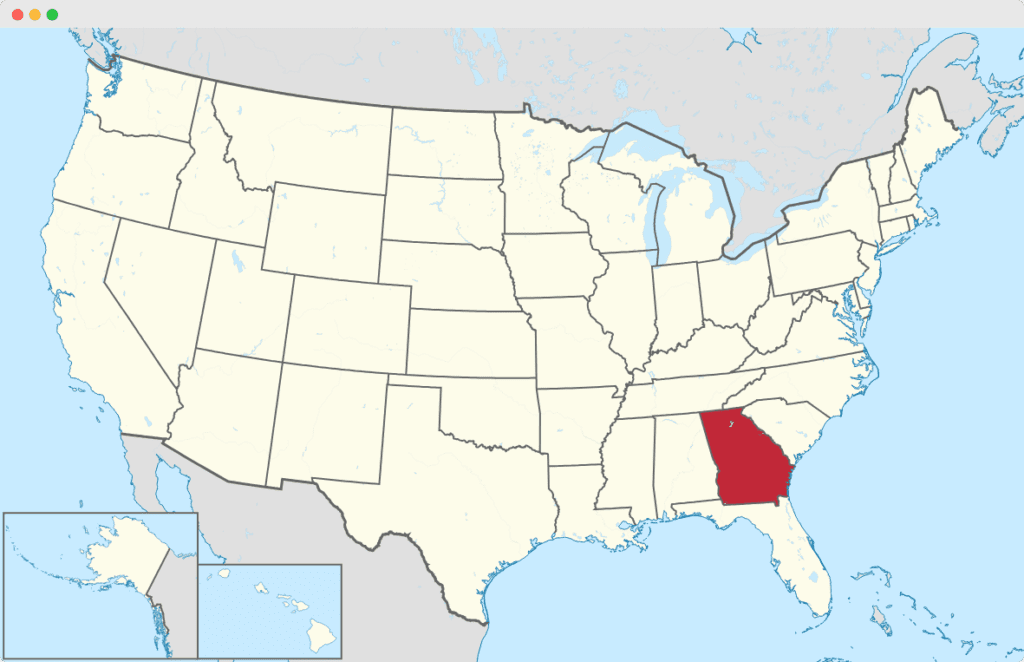Overview of Golf Cart Street Driving
The use of golf carts for street driving has gained popularity in various communities, such as Georgia. They are no longer restricted to golf courses and are now allowed on specific streets and roads within designated zones. This alternative method of transportation provides convenience, effectiveness, and advantages for the environment, making it an attractive choice for numerous residents.
Benefits of Golf Cart Transportation
Using golf carts for street driving in Georgia has numerous advantages.
1. Energy Efficiency:In contrast to conventional vehicles that rely on gasoline or diesel, golf carts usually operate on electricity. As a result, they do not produce any emissions, which makes them a sustainable means of transportation.
2. Cost Savings:In comparison to standard automobiles, golf carts are much more affordable to use and sustain. They consume less fuel or electricity, have lower insurance expenses, and need very little maintenance.
3. Traffic Mitigation:Golf carts are compact and have a lower maximum velocity compared to automobiles. This renders them perfect for brief travels and helps alleviate traffic congestion, particularly in residential zones.
4. Community Connectivity:Golf-cart friendly neighborhoods typically provide specific pathways or lanes for golf carts, enabling residents to conveniently move around their communities and reach nearby facilities.
5. Leisure Pursuits:Golf carts serve as both a convenient means of transportation and a delightful way to discover and enjoy the local surroundings. They are frequently utilized for recreational activities, such as sightseeing or going to nearby parks.
It is essential to understand that every city in Georgia might have its own set of rules and criteria when it comes to driving golf carts on the streets. To guarantee the safe and lawful use of golf carts on public roads, it is vital to acquaint yourself with the particular regulations and guidelines in your municipality.
RELATED: Golf Cart Street Driving Laws in Florida, USA
Georgia’s Golf Cart Laws
| What to do | What not to do |
|---|---|
| Don’t driver if you are younger than 15 years old. | Drink alcohol or use drugs before or while operating a golf cart. |
| Be aware of your surroundings and yield the right of way to pedestrians and other vehicles. | Operate a golf cart on wet or icy roads. |
| Obey all traffic laws. | Operate a golf cart on a freeway or interstate. |
| Operate a golf cart on a street with a posted speed limit of more than 35 mph.(in specific areas) | Carry more passengers than the golf cart is designed to hold. |
| Operate a golf cart without the proper safety equipment, such as headlights, brake lights, and turn signals. | Operate a golf cart that is not street legal. |
Comprehending the laws concerning golf carts in Georgia
Many communities and neighborhoods in Georgia rely on golf carts as a commonly used means of transportation. Nonetheless, it is important to have knowledge of the specific laws and regulations governing their use on public roads. Here are some fundamental aspects to comprehend about Georgia’s regulations concerning golf carts.
1. Registration and Permit:Golf carts driven on public roads in Georgia need to be registered with the Georgia Department of Motor Vehicles (DMV) and have a valid permit decal displayed. Registering involves providing proof of ownership and paying a registration fee.
2. Operating Requirements:To drive a golf cart on public roads in Georgia, one must have a valid driver’s license or learner’s permit, and they must be at least 15 years old.
3. Speed Limit:Golf carts are prohibited from surpassing the indicated speed limit or moving at a velocity higher than 20 miles per hour, whichever is the slower option.
4. Roadway Use:In Georgia, you can only drive golf carts on roads that have a maximum speed limit of 35 miles per hour or lower. It is not allowed to use them on state highways or roads where the speed limit is higher than 35 miles per hour, except for specific areas designated for crossing.
5. Lighting and Safety Devices:In Georgia, it is required for golf carts that are driven on public roads to have headlights, tail lights, brake lights, and turn signals. Furthermore, they must also be equipped with a rearview mirror, a horn, and seat belts for all people riding in the cart.
The criteria for golf carts to be considered legal for use on the streets in Georgia.

In order for a golf cart to be deemed street legal in Georgia, it must fulfill specific criteria. These criteria encompass:
1. Safety Equipment:Golf carts that are allowed to be driven on regular roads need to have specific safety features including headlights, rear lights, brake lights, turn signals, mirrors, and seatbelts.
2. Vehicle Modifications:To make golf carts suitable for driving on the street, they need to undergo alterations like fitting proper tires, adding a windshield, and installing a parking brake.
3. Registration and Permit:In order to be considered legal to drive on the street, golf carts must go through the process of registering with the DMV in Georgia and visibly showing a permit decal that is valid. This process entails providing evidence that shows ownership of the cart, paying a fee to register it, and getting insurance coverage for it.
4. Compliance with Traffic Laws:Individuals who are operating street legal golf carts are required to comply with all traffic regulations, which entails halting at traffic signals, giving priority to pedestrians, and adhering to specified speed limits.
Golf cart owners in Georgia should make sure they are aware of these laws and regulations in order to guarantee the legal and secure usage of their vehicles on public roads.
official website of the Georgia Department of Driver Services or contact their customer service. The website provides detailed information on the regulations and requirements for operating golf carts in the state of Georgia. If you have any specific inquiries or need clarification, their customer service representatives will be able to assist you.Georgia Department of Driver Services website.
Registering and Insuring Golf Carts in Georgia
Registering a Golf Cart in Georgia
If you plan to drive a golf cart on public roads in Georgia, it is mandatory to have it registered. Below are the essential stages to follow when registering a golf cart in Georgia.
1. Complete an Application:Get an application form for a Certificate of Title and Registration from either the Georgia Department of Revenue or the tax commissioner’s office in your local county.
2. Provide Required Documents:Please provide the completed application along with the specified documents.
- evidence of ownership (document such as a sales receipt, certificate of origin from the manufacturer, or proof of previous registration in Georgia)
- Proof of insurance
- Verification of identity can be established through the presentation of a driver’s license or an identification card.
- Evidence of payment of ad valorem tax (if it is relevant)
3. Pay the Fees:Make the payment for the registration and titling fees, which may differ depending on the county. These fees include the expenses for the license plate and registration sticker.
4. Display the License Plate:After you have completed the registration process, attach the license plate and registration decal to the back of the golf cart.
The regulations for golf cart insurance in the state of Georgia.
Although having insurance for a golf cart in Georgia is not obligatory, it is strongly advised for the purpose of safeguarding oneself and others against any possible accidents or harm. The following are crucial factors to bear in mind:
1. Liability Insurance:Although not mandated by law, having liability insurance can offer protection in the case of an accident involving bodily harm or property damage. It is recommended to consult your insurance company to ascertain the various coverage choices they offer.
2. Additional Coverage:Several insurance companies provide the choice of additional coverage for damages due to comprehensive and collision incidents, theft, as well as medical expenses. It is advisable to evaluate these supplementary coverage options according to your specific requirements and financial constraints.
3. Off-Road Use:If your main usage of the golf cart is off-road, like on personal land or golf courses, your homeowner’s insurance might offer certain coverage. However, it is crucial to examine your policy carefully to comprehend the level of coverage and any restrictions.
4. Consult with an Insurance Provider:If you want to make sure that your golf cart has the right insurance coverage, it is advisable to seek guidance from an insurance company that specializes in recreational vehicles or golf carts. They can offer assistance in understanding the necessary insurance obligations and suggest suitable coverage choices.
Always make safety your top priority when driving a golf cart on public roads in Georgia, and ensure that you adhere to the relevant traffic laws and regulations.
RELATED: Golf Cart Street Driving Laws in Delaware, USA
Safety guidelines for golf carts in Georgia

Safety Measures for Golf Cart Operators
To guarantee the safety of both yourself and others while operating a golf cart on Georgia’s streets, it is crucial to adhere to certain safety protocols. Presented below are several safety precautions that golf cart operators in Georgia should observe.
1. Valid License:You are required to possess a valid driver’s license in Georgia in order to drive a golf cart on public roads. It is important to always keep your license with you.
2. Age Restriction:It is necessary for the safety of all that only individuals aged 16 and above are permitted to drive a golf cart on public roads in Georgia. It is crucial to comply with this age requirement.
3. Obey Traffic Laws:People driving golf carts need to follow the same traffic rules as other drivers, such as respecting speed limits, stopping at signs, and obeying traffic lights.
4. Stay on Designated Roads:Golf carts must only be operated on roads specifically designated for their use. It is advisable to refrain from driving them on highways and main roads.
5. Avoid Overcrowding:To ensure safety and avoid accidents, it is important to not overload golf carts as they have a limited number of seats and need to maintain stability.
Georgia has specific regulations for passengers of golf carts. These rules are in place to ensure the safety of those riding in golf carts. It is important for passengers to be aware of and follow these regulations in order to avoid any accidents or injuries.
When you are a passenger on a golf cart in Georgia, it is crucial to adhere to specific regulations to ensure your safety.
1. Remain Seated:When the golf cart is moving, passengers must remain seated and refrain from standing or hanging off the sides.
2. Hold On:Keep a firm grip on the specified handholds or railings to maintain stability.
3. Use Seat Belts:Passengers should wear seat belts for added safety if the golf cart is equipped with them.
4. Keep Limbs Inside the Cart:In order to prevent getting hurt, make sure to keep all body parts inside the golf cart while it is moving.
5. Avoid Distractions:Individuals riding in the golf cart must avoid activities that may divert the attention of the driver or potentially endanger the safety of the vehicle.
By adhering to these safety instructions, both individuals operating golf carts and those riding as passengers can have a secure and pleasant experience while traveling on the roads of Georgia.
official website of the Georgia Department of Public Safety. By accessing their website, you can find detailed information about the laws and regulations pertaining to golf carts in the state of Georgia.The Office of Highway Safety in Georgia’s Governor’s Office. website.
Where is it possible to operate a golf cart?
Roads that are permitted for the use of golf carts for street driving.
In the state of Georgia, it is possible to operate golf carts on certain roads, however, it is crucial to have a thorough understanding of the applicable laws and regulations to ensure adherence and safety. Here are some important considerations regarding the permitted streets for driving golf carts in Georgia.
- Low-speed Roads:Golf carts are permitted to be driven on roads with a maximum speed limit of 35 mph or lower.
- Neighborhoods and Residential Areas:Golf carts are frequently utilized in local communities and residential zones, where they are legally allowed to operate on streets with reduced speed restrictions.
- Crossing Higher Speed Roads:If golf carts have the required equipment, such as flashing lights and proper signs, they are allowed to travel on roads with higher speed limits.
- Designated Paths and Trails:In certain regions, there might be allocated routes or tracks designed exclusively for the purpose of using golf carts. Typically, these routes are distinct from regular streets.
It should be emphasized that specific rules and regulations still need to be followed when operating a golf cart on approved roads, regardless of its authorization. These guidelines comprise using proper signals, adhering to traffic laws, and ensuring that the golf cart complies with necessary safety standards.
Places where golf carts are not allowed in Georgia
Although golf carts are allowed on specific roads, there are also places where they are not permitted. It is essential to be conscious of these forbidden areas to prevent any legal problems or potential dangers. Here are some typical locations where golf carts are usually prohibited:
- Major Highways and Interstates:It is prohibited to operate golf carts on main highways or interstates with a speed limit higher than 35 mph. These roads are intended for vehicles traveling at high speeds and are not appropriate for golf carts.
- Sidewalks and Pedestrian Walkways:It is not advisable to drive golf carts on sidewalks or pedestrian walkways due to the risks they pose to pedestrians and the potential for causing accidents.
- Designated Bike Lanes:It is not appropriate to drive golf carts in bike lanes since these lanes are specifically meant for bicycles and not for vehicles powered by engines.
To guarantee safe and lawful use, it is important to become acquainted with the particular rules and regulations pertaining to golf cart usage in your locality. Adhering to these guidelines will allow you to fully enjoy your golf cart experience while upholding the law and ensuring the safety of both yourself and others.
RELATED: Golf Cart Street Driving Laws in Connecticut, USA
In Georgia, there are consequences for breaking the laws regarding golf carts.
Penalties and fines for breaking the laws regarding golf carts.
Just like any other laws, there are repercussions for breaking the golf cart laws in Georgia. It is important to be aware of these consequences to ensure that you follow the rules and avoid any unnecessary fines or penalties. Here are some possible penalties for violating the golf cart laws in Georgia:
1. Fine:Penalties for breaking golf cart regulations can lead to fines of anywhere between $100 and $300, depending on the particular violation committed.
2. License Suspension:Your driver’s license or permit may be suspended if you break golf cart laws, which can greatly affect your ability to drive any kind of vehicle.
3. Points on Driving Record:Some infractions can lead to points being added to your driving record, which in turn can raise your insurance rates and potentially result in the temporary revocation of your driver’s license.
The outcomes of operating a golf cart that does not meet regulations
If you choose to operate a golf cart that does not meet the required standards in Georgia, there can be severe outcomes that you might encounter. Below are a few possible repercussions:
Not qualifying to operate a golf cart.If your golf cart does not adhere to the necessary safety standards and regulations, you may not be allowed to use it on public roads and streets.
2. Increased Liability:If you operate a golf cart that does not meet the required standards, your liability can be higher if there is an accident or injury. You could be held accountable for any harm or damages that happen due to your non-compliant vehicle.
3. Legal Troubles:Using a golf cart that does not conform to regulations could result in legal complications, such as being fined, facing penalties, and potentially being legally pursued by other individuals involved in an accident.
Familiarizing oneself with the golf cart laws in Georgia is crucial and ensuring that your vehicle meets all the necessary requirements is important in order to avoid incurring any penalties or consequences.
To obtain additional details about the regulations pertaining to driving golf carts on the streets in Georgia, you may consult the provided resources.Golf Cart article on Wikipedia.
Golf Cart Modifications in Georgia

Acceptable alterations for golf carts in Georgia
Golf cart owners in Georgia have the freedom to personalize their carts according to their own preferences and requirements. Nevertheless, it is crucial to understand the alterations that are permitted to ensure adherence to local regulations. The following are some typical modifications that are permissible in Georgia:
- Headlights and Taillights:You can install headlights and taillights on your golf cart as long as you follow the regulations stated in Georgia law. These lights improve visibility and safety, particularly when driving during nighttime.
- Turn Signals:Turn signals can be added to golf carts to show the driver’s intention of turning. This feature is especially useful when driving on public roads with other vehicles.
- Side Mirrors:In Georgia, it is allowed to add side mirrors to a golf cart. These mirrors enhance visibility and help the driver to have a clearer understanding of their surroundings.
- Windshields:In golf, it is possible for carts to be equipped with windshields that safeguard against wind, dust, and debris. Furthermore, tinted windshields are permissible as long as they adhere to the precise standards established by Georgia legislation.
Restrictions on Golf Cart Customizations
In Georgia, there are a number of alterations that are allowed for golf carts, but it is important to understand the limitations. It is important to note that certain modifications are not allowed and should be avoided.
- Elevated or Lifted Suspensions:Making changes to the suspension system in order to raise or lift the golf cart is prohibited in Georgia. This rule exists to ensure that the vehicle remains stable and safe.
- Excessive Noise Modifications:Making changes to the golf cart that result in a louder noise, for example, by installing loud amplifiers or speakers, is not allowed. These modifications have the potential to disturb the quiet atmosphere of residential areas or create disruptions on public roads.
- Speed Modification:It is against the law in Georgia to modify the speed capabilities of a golf cart beyond the specified limits. It is crucial to follow the prescribed speed limits for golf carts to ensure the safety of all individuals on the road.
RELATED: Golf Cart Street Driving Laws In California
The maintenance and inspection of golf carts in Georgia is discussed in the eighth section.
Maintenance requirements for golf carts that need to be performed on a regular basis.
Regular maintenance and inspections are essential for ensuring the safe operation of golf carts on streets in Georgia. Below are some important maintenance obligations that must be met for golf carts in Georgia.
1. Battery Maintenance:In order to keep golf carts running at their best, it is important to regularly maintain the electric batteries. This includes checking the water level, cleaning the terminals, and ensuring they are charged correctly.
2. Tire Inspection:Regularly check the condition of the tires for signs of wear and damage. Make sure the tires have the correct air pressure and promptly replace any tires that are worn-out or have been harmed.
3. Brake System:Regularly examine the brake system to confirm proper operation. Evaluate the condition of the brake pads, brake cables, and brake fluid levels.
4. Lights and Signals:Make certain that all lights, such as headlights, taillights, brake lights, and turn signals, are functioning properly. Replace any bulbs that are not working or fix any faulty wiring.
5. Steering and Suspension:Examine the steering system and suspension parts for any indications of harm or excessive usage. Apply grease to the steering joints if needed.
6. Seat Belts:Regularly inspect the seat belts on your golf cart to make sure they are functioning properly.
7. Cleaning and Lubrication:Regularly perform cleaning and maintenance on both the interior and exterior of the golf cart using suitable cleaning products and lubricants to ensure its optimum condition.
By adhering to these maintenance guidelines and conducting regular inspections on your golf cart, you can guarantee that it stays in excellent condition for driving on Georgia roads without any safety concerns.
To gather further details about golf cart laws and regulations in Georgia, one can consult the authorized source.Website of the Georgia Department of Driver Services..
Tips for Driving Golf Carts on the Streets in Georgia
Tips for Safe Driving of Golf Carts
It is crucial to adhere to these safe driving techniques while operating a golf cart on the roads of Georgia.
1. Obey Traffic Laws:Similar to all other types of vehicles, golf carts are required to adhere to traffic regulations. It is important to consistently obey designated speed limits, obey traffic signals, and heed the instructions provided by road signs.
2. Use Seat Belts:If you have seat belts in your golf cart, remember to buckle up. Seat belts can provide safety for you and your passengers if there is a crash.
3. Stay Visible:Make sure that the lighting on your golf cart is complete, such as having headlights and taillights, particularly for traveling after dark. It is crucial to ensure that other drivers can see you on the road.
4. Yield to Pedestrians:It is important to prioritize pedestrians by yielding to them at crosswalks and intersections. Show awareness of pedestrians and ensure their safe passage when crossing the road.
5. Avoid Distractions:Driving while distracted can be risky, even when operating a golf cart. It is vital to stay fully attentive to the road, refraining from using your phone or participating in any activities that could divert your concentration from driving.
Guidelines for Properly Interacting with Other Vehicles on the Road
To ensure the safe sharing of the road, it is crucial to display courtesy and consideration towards other vehicles when operating a golf cart. Adhering to the following guidelines will help maintain a safe and harmonious environment:
• Stay in Designated Areas:Stay on designated roads and areas where golf carts are allowed. Refrain from driving on highways or roads with high-speed limits that are not designated for golf cart usage.
• Be Mindful of Traffic:Please be considerate of other drivers and allow them to pass when it is safe to do so, as golf carts typically move at a slower pace compared to most vehicles. It is important to avoid creating traffic congestion or blocking the flow of traffic.
• Use Hand Signals:Hand signals should be utilized to indicate your intentions when turning or changing lanes because golf carts may not be equipped with turn signals. This will enable other drivers to comprehend your upcoming course of action.
• Maintain a Safe Distance:In order to prevent accidents, it is important to keep a sufficient distance from other vehicles and drive at a speed that allows for a comfortable and safe stopping distance.
• Be Respectful:Show respect and courtesy to fellow drivers. Observe traffic regulations, yield when necessary, and steer clear of aggressive or dangerous driving actions.
Please keep in mind that different counties in Georgia might have their own rules and regulations regarding the use of golf carts on public roads. It is important to familiarize yourself with the local laws and regulations to ensure that your golf cart driving experience on the streets is both safe and within the legal boundaries in Georgia.
Additional sources available to golf cart owners in Georgia.
Helpful Online Resources and Contacts for Owners of Golf Carts
If you are a golf cart owner in Georgia and would like to drive on the streets, the following resources may be beneficial:
The Georgia Department of Driver Services offers permits for golf carts.You can find all the necessary information for obtaining a golf cart permit and familiarizing yourself with the applicable rules and regulations related to driving on the streets on the official website of the Georgia Department of Driver Services.
2. Georgia Code – Title 40, Chapter 6:It is crucial to acquaint yourself with the regulations and laws in this part of the Georgia Code that specifically cover the use of golf carts on public roads. This will guarantee that you are operating your golf cart both legally and safely.
3. Local Government Websites:Several cities and counties in Georgia have specific rules and regulations concerning the use of golf carts. To find out about any extra conditions or limitations, it is advisable to visit the official website of your local government.
Insurance providers in Georgia that offer coverage for golf carts.As golf carts are considered as vehicles, it is crucial to have insurance coverage. It is advisable to reach out to your chosen insurance provider and ask about customized coverage options designed specifically for golf carts.
Frequently Asked Questions regarding the operation of golf carts on the streets of Georgia.
Below are some common inquiries about driving golf carts on the streets of Georgia:
Is it necessary to possess a driver’s license in order to drive a golf cart on public roads in Georgia?
Yes, in Georgia, you need to have a legitimate driver’s license in order to drive a golf cart on public streets.
A: Is it permissible to operate my golf cart on any public road throughout Georgia?
B: Golf carts are prohibited from being on state highways or roads that have a speed limit higher than 35 miles per hour, unless they are crossing at an intersection or a designated crossing.
Is it mandatory for golf carts to be equipped with headlights and taillights?A: Certainly, golf carts that are used during the period from sunset to sunrise must have headlights and taillights installed.
Does it allow me to transport people on my golf cart?A: Absolutely, as long as the total number of passengers does not surpass the number of seats present and the passengers are seated in a safe and stable manner.
Always make safety your top priority and adhere to the established rules and regulations when driving your golf cart on public roads in Georgia.
Conclusion
Specific laws are in place in Georgia to regulate the use of golf carts on public roads, with the aim of guaranteeing the safety of drivers, passengers, and pedestrians. Here is a brief overview of the laws governing the operation of golf carts on streets in Georgia.
1. Registration and Insurance:In order to comply with Georgia law, individuals must make sure their golf carts are officially registered with the Georgia Department of Motor Vehicles and have a valid license plate. Furthermore, owners of golf carts are obligated to have insurance coverage that protects against liability.
2. License Requirements:In order to drive a golf cart on public roads, the individual operating the vehicle must be at least 16 years of age and possess a legitimate driver’s license.
3. Speed Limits:The speed of golf carts should not go beyond the designated speed limit, which is usually set at 25 miles per hour.
4. Road Use:In order to drive golf carts on public roads, the speed limit should not exceed 35 miles per hour. Golf cart drivers must also give priority to other vehicles and follow all traffic regulations.
5. Lighting and Equipment:In order to comply with regulations, golf carts need to have headlights, taillights, turn signals, and rearview mirrors. Moreover, they are required to have a horn or another form of audible device.
6. Occupancy:Golf carts are created with a designated capacity for passengers, and it is strictly forbidden to go beyond that limit.
7. Prohibited Areas:It is forbidden to use golf carts on sidewalks, bicycle paths, or highways with a speed limit exceeding 35 miles per hour, unless it is for crossing at an intersection or a designated crossing area.

I’m Donna Weiss, and I am the proud writer behind the captivating content you’ll find on golfneedy.com. As an avid golfer and passionate writer, I have combined my two greatest passions to bring you an incredible golfing experience. Through my articles, I aim to provide you with valuable insights, equipment reviews, and updates on the latest tournaments. Whether you’re a seasoned golfer or just starting out on this exciting journey, I am here to guide you and share my expertise. Together, let’s explore the fascinating world of golf, uncovering new techniques, and enhancing our skills. Join me on this thrilling adventure as we elevate our game and embark on an exciting golfing journey. Read More



